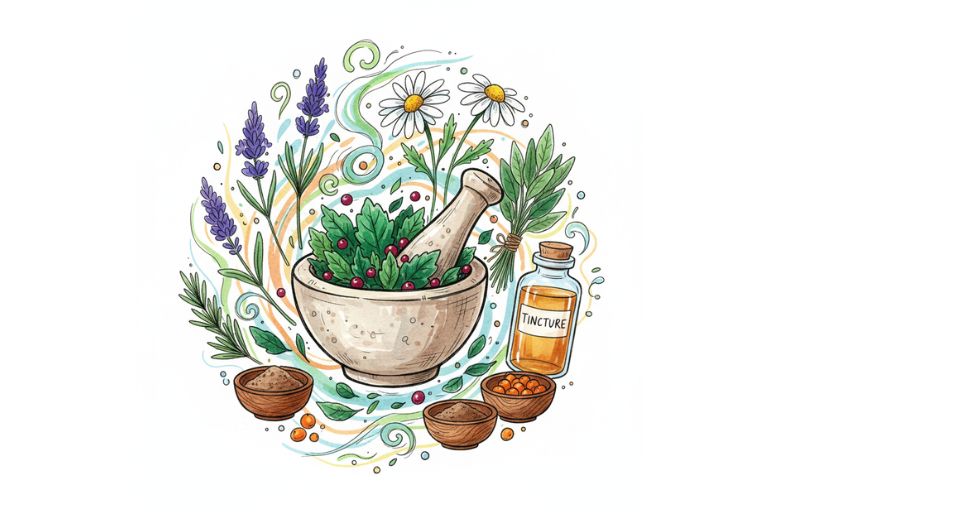
Sep 16, 2025

The Global Herbal Medicine Market report, authored by Metastat Insight, is a fascinating insight into a market that is bringing the best of the past together with the consumerism of the present day. Herbal medicine, based on centuries of healing tradition, has been gaining popularity steadily as people look for alternatives to pharmaceutical drugs. This market is not a specialty interest anymore but a successful segment that represents a cultural movement towards natural well-being and preventive medicine. Globally, more and more families are incorporating herbal products into their lifestyle, from supplements and teas to skincare and therapeutic oils, reflecting a change in attitude towards health and well-being.
Perhaps the most impressive feature of this market's growth is how it manages to bring together various geographies and traditions for a common purpose of nature-based solutions. In Asia, Ayurveda and Traditional Chinese Medicine have been shaped over millennia and are now increasingly becoming well-rooted in broader markets in the West. In Europe, the focus is on phytotherapies because of the regulatory framework that aims to preserve quality without compromising the purity of herbal products. In North America, yet, there is a spread of wellness culture to a degree that consumers are open to experimenting with herbal alternatives for stress management, immunity, and even cosmetics. This cross-cultural confluence has endowed the industry with a distinctive global personality that presents something new to each region yet remains responsive to local taste simultaneously.
The need for herbal medicine is not just due to its natural form but also due to the fact that it is in harmony with the need of the times as regards lifestyle. People are more conscious of what they consume through the mouth and apply on their skin and are more vigilant when it comes to labels, opting for a product that is not just perceived as gentle, pure, and green but also a beauty. This changed way of consumption has sparked innovation in the market. Pharmaceutical companies have been testing their dosage forms to be convenient and good-looking, such as capsules, gummies, and ready-to-drink infusions that meet the convenience demand without sacrificing efficacy. Second, transparency of sourcing is increasingly popular, with brands investing emphasis on where and how exactly their herbs are grown and stressing the rightness of production, and creating that added consumer trust. Technology also plays a part in molding this market in non-traditional ways.
The Internet has made herbal products more accessible to consumers who once lacked easy access and allowed niche producers and micro-firms to communicate with dedicated enthusiasts worldwide. Health activists and social media personalities are now in the game because they educate others on the worthiness of particular herbs, ranging from ashwagandha and ginseng to turmeric and chamomile. Internet forums have provided a platform where individuals talk freely about personal experiences, leading to more new trials and uptake. Another interesting phenomenon is how pharmaceutical companies are exploring the use of herbs.
Instead of perceiving herbal medicine as threats, other top companies have ventured into R&D so that they can add botanical products to their portfolios. This convergence has succeeded in balancing traditional knowledge and science so that herbal solutions could be accepted by healthcare providers as well as patients looking for evidence-based remedies. Herbal remedies are now available with the traditional medication in most pharmacies, providing the customer with an option between what meets their requirements. Regulatory support is adapting to meet this increased demand.
A number of governments have begun implementing official quality standards for herbal medicine to guarantee safety without abandoning cultural heritage. This balance has enabled more players to venture into this business with the understanding that there is a firm framework to work in. It also gives customers confidence that what they purchase is genuine and safe, something which is extremely essential in a market that is so dependent on trust. Generally, the history of this marketplace is a one of tradition with collision and innovation with collision, and culture with collision.
It is an expression of a greater human desire to seek balance — not abandoning current medicine but complementing it with natural remedies that have stood the test of centuries. As the world becomes more integrated, the exchange of herbal knowledge and practices will increasingly go deep, exposing people to lesser-known plants and preparations that can add richness to their path of wellness. Briefly, the results documented in the Global Herbal Medicine Market report by Metastat Insight illustrate how the practice has evolved from being a local activity to a major component of global health and wellness practices. It is a sign that natural healing is not a fleeting trend but a fundamental part of how society is transforming health. Through the bringing together of ancient traditions and modern innovations, the market prospers, sketching out a future in which herbal medicine is not just sustained but also worshiped on the international stage.
Drop us an email at:
Call us on:
+1 214 613 5758
+91 73850 57479